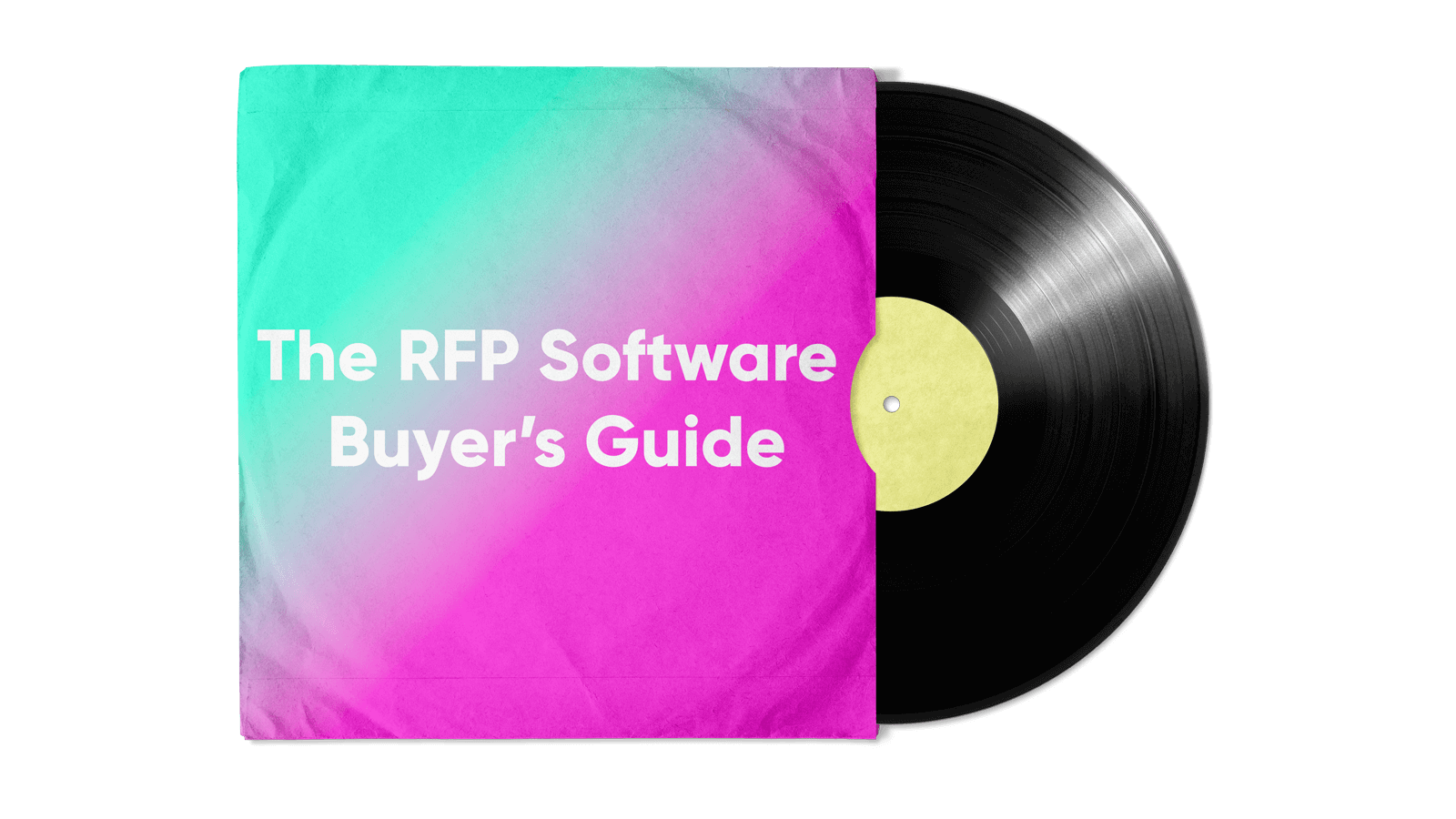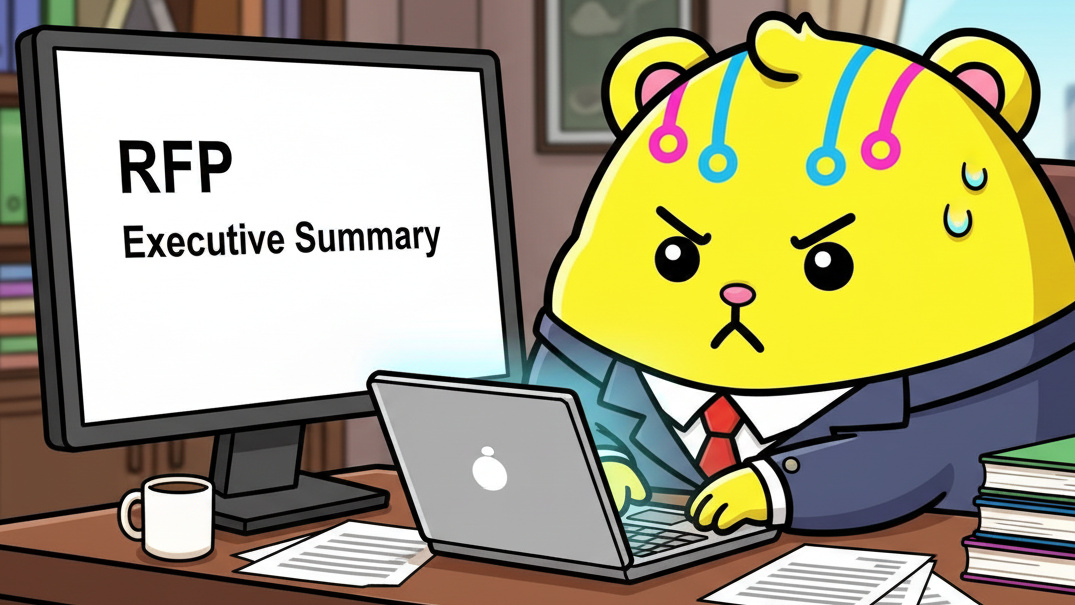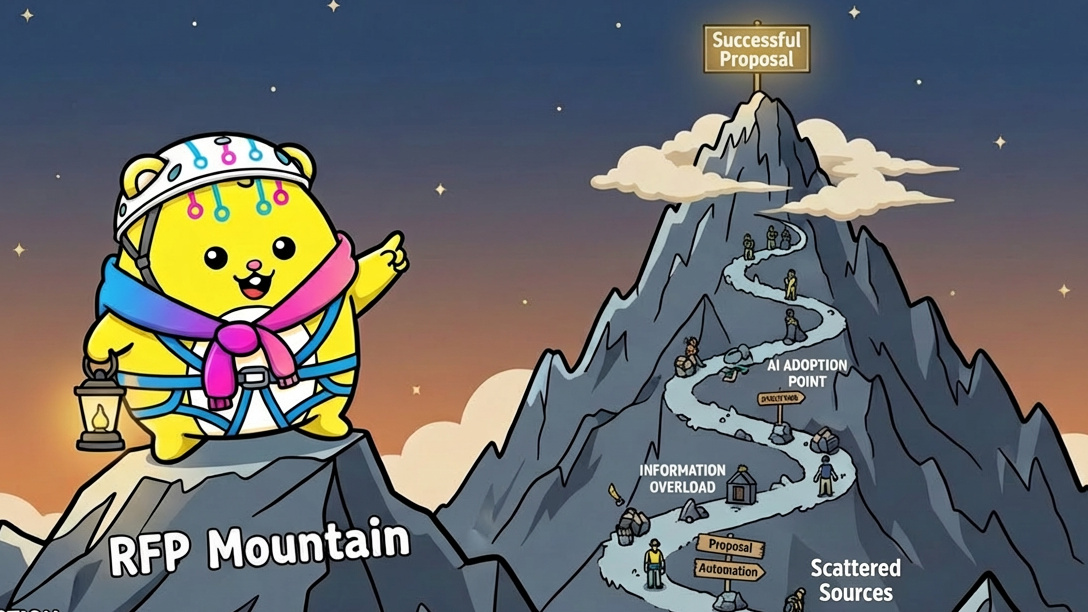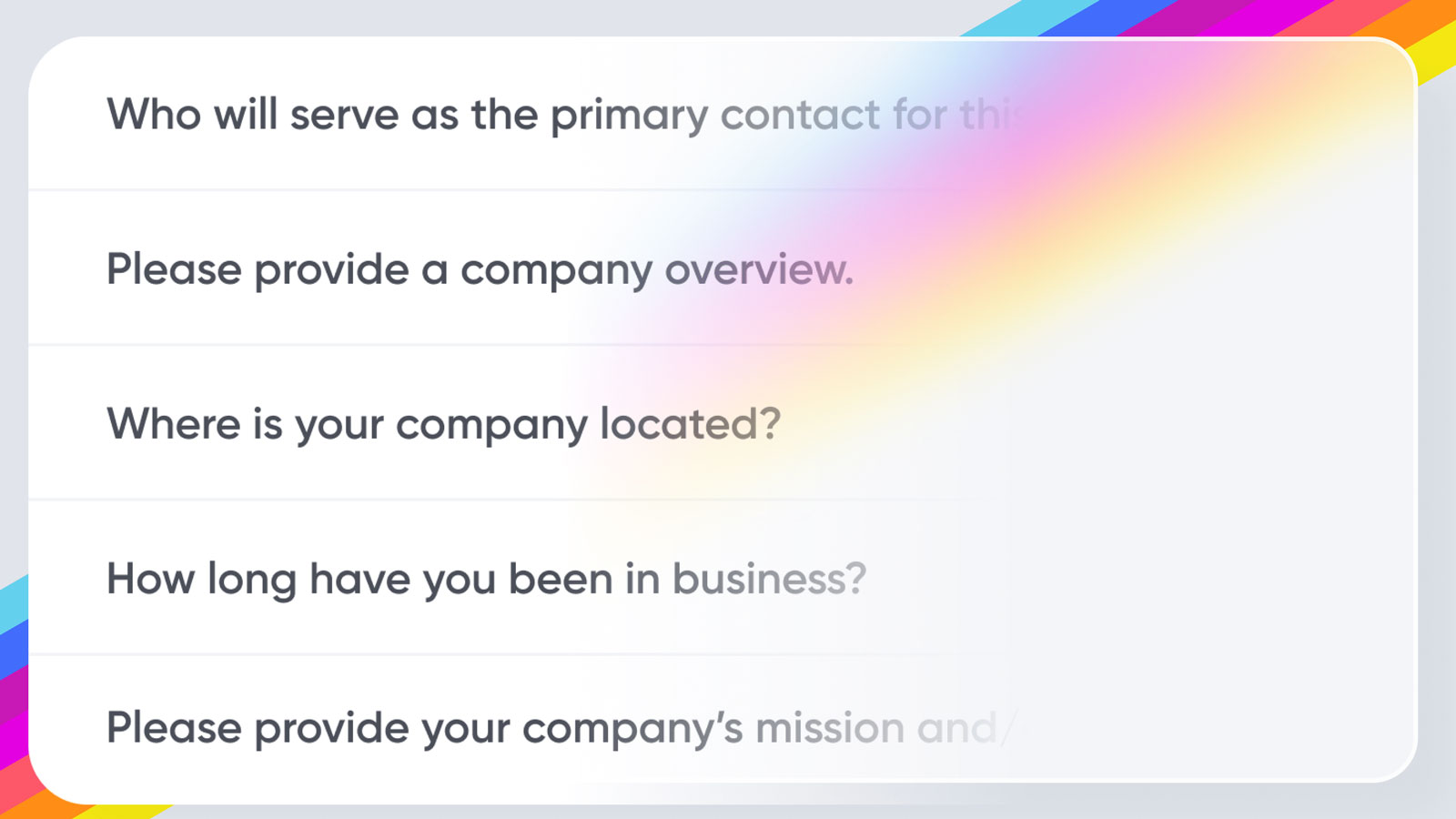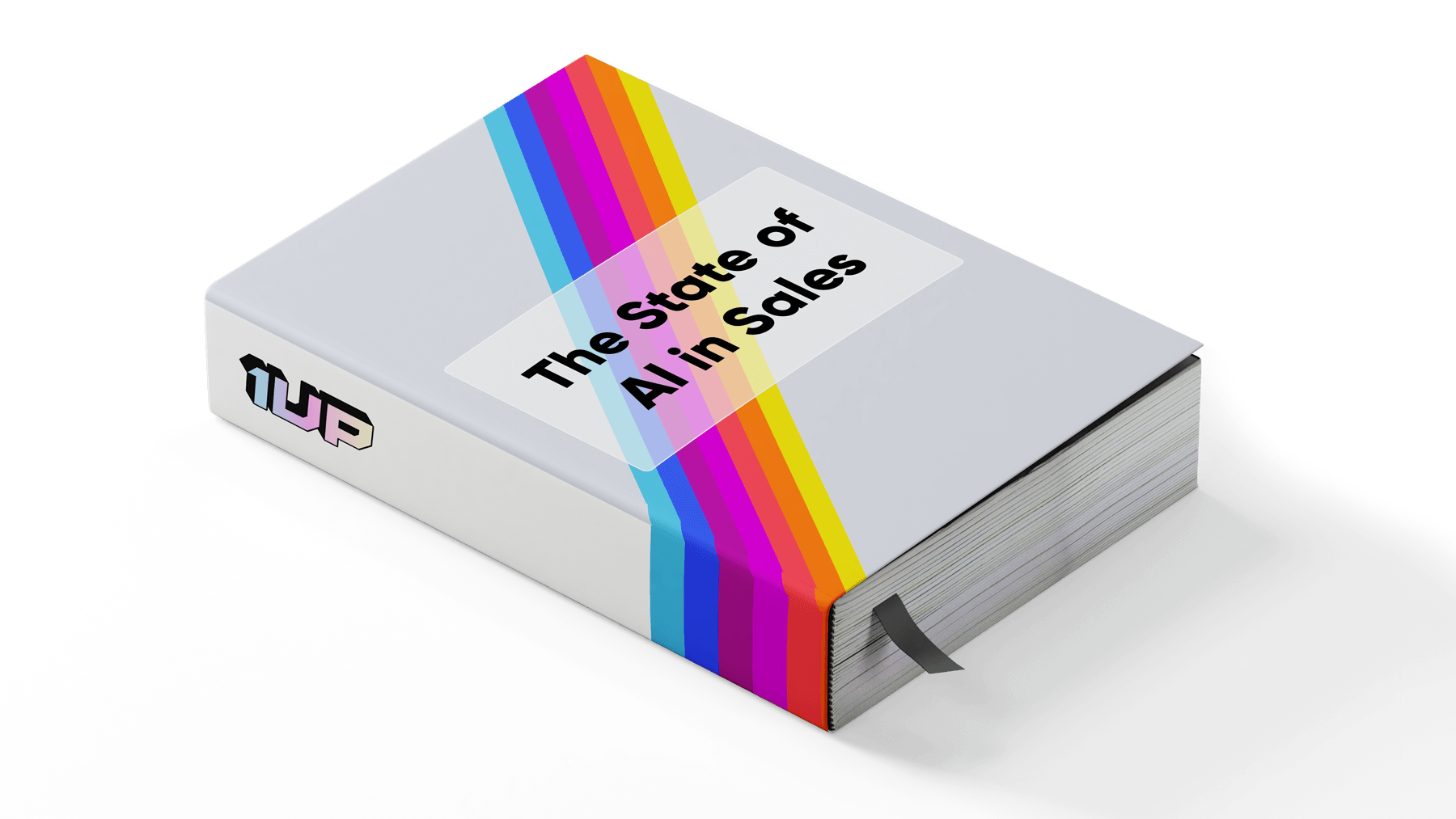When it comes to buying an AI RFP automation tool, it’s overwhelming to actually find out who the best RFP software is.
After all, every product claims to have the latest, greatest model with the best features.
And yet, when you sit through the demos, they all blend. Everything looks amazing on paper—until you have to use it.
So, how do you separate the real game-changers from the overhyped software? How do you avoid spending months onboarding a tool that ultimately slows your team down?

That’s exactly why we put together this buyer’s guide. We’ll walk you through the different types of RFP tools, what to look for, and even rank the top options available in 2025.
By the end, you’ll know exactly what to ask vendors, what red flags to avoid, and most importantly—how to pick an RFP automation tool that actually saves you time instead of creating extra work.
Let’s get started.
Key Takeaways
- RFP software should eliminate extra work – not add to it. The best RFP software should handle responses quickly and accurately without requiring constant manual oversight.
- A tool that generates vague, inaccurate, or outdated responses will waste more time than it saves.
- AI-native tools like 1up focus on automation and speed, while legacy tools like Loopio and Responsive prioritize RFP project management. We review each tool on criteria like speed, answer quality, and ease of use.
Types of Tools 🛠️
Dealing with RFPs and compliance questionnaires is a pain point that Sales and IT teams face on a regular basis. There are a few routes you can take when trying to modernize this process.
Manual In-House RFP Responses
This is by far the most painful approach. In most cases, a dedicated teammate will be assigned to own the questionnaire response process. In larger organizations, this can involve a full team with a complex workflow, and the need to maintain a large library of information.
Most companies want to transition away from this costly and inefficient approach – in fact, we recently did a study on how long it takes to manually complete an RFP.
- Pros: You can maintain control over the workflow from start to finish. Some people prefer this approach over using RFP software…for some reason?
- Cons: A manual process is slow, expensive, and leads to bottlenecks in responding. This can slow down sales and frustrate teammates. The quality of responses can also vary as humans are left to read, write, and proofread a large amount of text.
RFP Project Management Software
These tools are more common among enterprises and larger organizations where the RFP workflow is high-volume and has many movings parts. If you’re looking for a large software suite that can help you ‘project manage’ a high volume of RFPs and questionnaires, this might be the category for you.
The biggest downside is that users report spending more time researching, manually writing responses, and maintaining a large knowledge base due to the lack of answer automation.
- Pros: Enterprise-ready software with big customer names
- Cons: Expensive, slow user experience, bloated interface, difficult to use, lacking automation
- Examples: Responsive, Loopio, and Qvidian
Looking at legacy RFP tools? Check out these guides:
Sales Enablement & Knowledge Management
Believe it or not, some revenue teams have tried leveraging traditional knowledge management and enablement tools to improve their RFP response workflows. Unfortunately, this is like fitting a square peg in a round hole. Though the user personas do often overlap, enablement tools do not address the pain points associated with responding to sales and compliance questionnaires.
- Pros: Established software tools with good reputations among sales teams
- Cons: High price tag, unable to address the specific pain point
- Examples: Highspot, Seismic, Guru, Glean
Looking at legacy enablement tools? Check out these guides:
Security Compliance Software
In a similar vein, IT and security teams have tried using compliance software to address the questionnaire problem. While these are great tools for achieving infosec compliance, the technology does not translate well into the specific pain point of responding to complex RFPs and questionnaires. Despite some of these tools having questionnaire assistants, they are limited and still require you to research and manually write responses.
Furthermore, these tools get siloed into the security teams when in fact most RFP and compliance questionnaire activity comes from the sales org. This is why many of our customers use 1up alongside their existing IT compliance software.
- Pros: High-quality systems trusted by IT and InfoSec teams
- Cons: Despite their great reputation, these tools do not address RFP/questionnaire automation pain points
- Examples: Vanta, Thoropass, Drata
AI RFP & Questionnaire Automation Tools
This category is widely-considered to be the modern approach to automating RFPs and security questionnaires, and answering sales questions 10x faster. By combining Large Language Models with an automated knowledge base, tools like 1up deliver a user experience that addresses specific pain points.
The result is an automation experience that Sales and IT teams love to use daily at companies of all sizes. Here’s a demo of what that looks like:
Ranking the Best RFP Tools in 2025
The RFP software market is filled with so many tools, but not all tools are created equally. Some promise full automation but leave you in a maze of manual work. Others offer powerful AI capabilities, but their usability is so frustrating that teams avoid using them altogether.
We’ve evaluated the top RFP software options based on actual performance to cut through the noise, not just feature lists.
We looked at automation quality, ease of use, integration flexibility, and real-world adoption. The result? A ranked list that highlights not just who’s making the biggest claims but who’s actually delivering.
Here’s how the top RFP tools stack up in 2025.
1. 1up
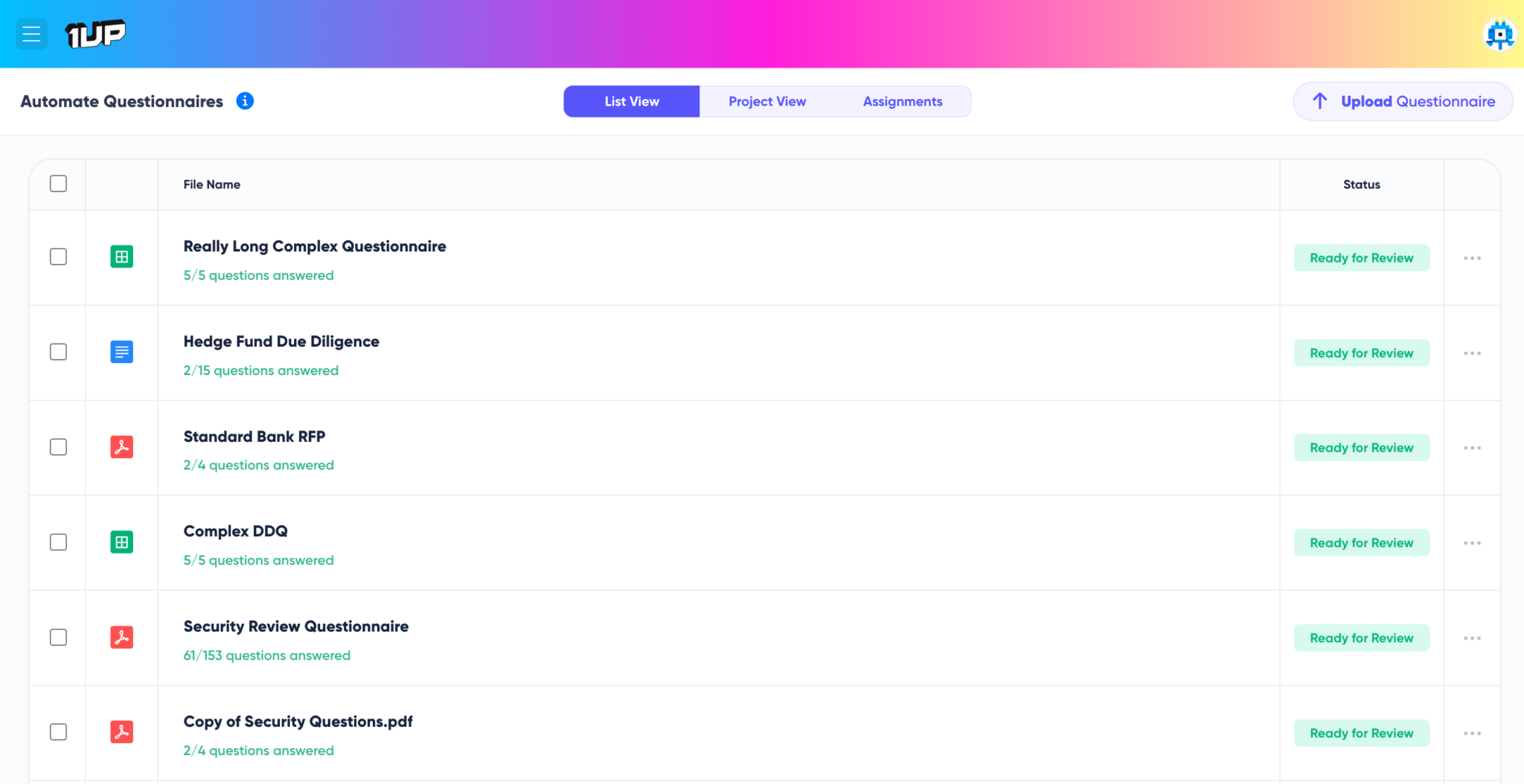
Best known for: Automation, response speed, AI-native workflows, and ease of use.
We know that listing ourselves as the best RFP software may seem biased, but don’t just take our word for it; industry leaders like WalkMe(SAP), Docebo, Delivero, Gladly, Continu, and many more have switched over to 1up.
1up will allow your sales process to move more quickly, seamlessly, and accurately.
1up helps sales teams fill out RFPs, questionnaires, and DDQs in record time, sometimes in seconds. We centralize all of your data in a large knowledge base, eliminating the need for manual searches.
No more interrupting teammates. No more endless searches through dozens of files. Your team members can ask their sales questions in their messaging system, like Slack, MS Teams, or Google Chat.
You can also export a Word Doc or Excel Sheet to be automatically filled out with data from your knowledge base, making your salespeople experts in minutes. No doc to upload? No problem. We have a browser extension that will work directly on your web pages.
As an added bonus, 1up provides valuable insights. Our analytics reveal trends, content gaps, and key data on what your customers and reps are asking.
1up offers a free 14-day trial, something that no one else does, so you can see for yourself how we can help you. You can have your first RFP response completed before your lunch break.
| Pros | Cons |
| Responses in minutes as opposed to hours or days | Limited Enterprise audit logging capabilities |
| Easy-to-use with tons of integrations with Slack, MS Teams, and more | Live support is only for North America and only during working hours |
| Never get inaccurate responses because data comes from your internal documents, website, and more | White-glove onboarding is limited to Enterprise plan |
| The fastest setup time on the RFP response platform market, with an easy walk-through demo provided | Cannot export custom PDF templates |
| Completes complex sheets and files with hundreds of lines quickly and easily | |
| Live chat with a real human, instead of another AI support system, while taking all user feedback to heart and actually integrating it | |
| Users get links to the original source, so you can verify accuracy |
2. Loopio

Loopio is a content management system (like Responsive). It is one of the most popular automated response software companies that lets teams manage every step of the sales cycle from within AI-powered workflows.
Top Feature: Loopio has what it calls a “Magic” tool that automatically pulls relevant information from a centralized library to complete RFPs and questionnaires.
From deciding whether to accept an RFP to tracking prospects as they view your docs, Loopio helps you do it all.
The platform’s structured content library is also a key feature, ensuring teams can organize and reuse accurate responses. However, maintaining this library requires ongoing effort—if they’re outdated, AI-generated answers may miss the mark.
Loopio supports multiple file formats (Word, Excel, PDF, and web-based questionnaires) and includes reporting tools to track content performance. While automation speeds up responses, manual oversight is still needed for formatting, customization, and keeping content fresh.
As for the downsides, well:
- The content library is hard to manage
- Complex DDQs are hard to complete with automation
- Users need a ton of training to navigate the platform
And again, no free trial, so you can’t check it out before you invest.
| Pros | Cons |
| Streamlines complex tasks with a powerful search feature from a centralized dashboard | Users frequently find the platform challenging to navigate, with minimal self-service training available, requiring them to learn everything from the ground up |
| Robust library designed to store extensive catalog responses | Managing and updating the content library becomes difficult as content quickly becomes outdated |
| Handy mapping tool makes importing documents easier and more efficient | Struggles to process unfamiliar formats, often forcing users to manually input questions |
| Lack of transparent pricing and no option for a free trial | |
| Limited automation features, leaving users responsible for maintaining and updating the knowledge base themselves |
3. Responsive

Responsive, formerly known as RFPIO, has a big claim to fame: it’s self-proclaimed the “most robust platform!” What this means for users is that you can begin considering an RFP or questionnaire from the very first day and follow it through to the end.
Top Feature: the reality is that Responsive does have a high-quality AI-powered content generation and recommendation engine. This is helpful because it doesn’t just follow user orders. Instead, it can contextualize and recommend responses.
Responsive offers to partner with users in Strategic Response Management, “powering all types of information exchange across an opportunity lifecycle.”
Similar to Loopio, Responsive is also a traditional content management platform. This means you’ll have to manage your content library.
The primary focus of Responsive is in the name. It is committed to providing quick, accurate automated responses to RFPs and questionnaires. The tools the company offers also help break down silos among departments, helping teammates communicate more effectively.
Still, there are problems with Responsive:
- Document mapping is manual
- Mediocre AI-generated answers
- Complex interface
- Impossible knowledge base maintenance
- Limited text formatting
Finally, Responsive doesn’t offer a free trial to get started.
| Pros | Cons |
| Oversee every stage of the RFP process directly on the platform | Limited automation features, leaving you to manually manage the knowledge base, update responses, and clean up outdated content |
| Gain valuable insights through advanced analytics | No clear pricing details and no free trial available |
| Seamlessly collaborate with your team and clients | Formatting inconsistencies when copying and pasting content |
| An overwhelming number of features and settings can make the platform confusing to navigate | |
| Document and column mapping can be time-consuming and labor-intensive |
4. Qvidian

Qvidian’s biggest claim to fame as a sales enablement platform is that it is a cloud-based proposal management software. Its goal is to help teams build proposals through strong collaboration and powerful, highly intelligent AI. Qvidian has a team of professional, educational, and technical service teams.
Top Feature: Qvidian is well-known for its customizable and flexible templates that let users maintain branding and stay in compliance with legal standards.
The Qvidian team is made up of proposal experts. So, if you’re looking to automate your proposal, of any kind, Qvidian is probably going to show up in your search. They also commit to scaling with you as your business grows.
Specifically, Qvidian is ideal for financial services companies looking to win more deals.
Still, users complain most about the following:
- Onboarding is confusing and time-consuming
- Search capability leaves much to be desired
- Document architecture is too technical
- Content updates are lengthy and annoying
You also get no free trial, and no pricing list. So you’ll have to spend 30 minutes watching a demo only to find out you don’t want to pay their prices.
| Pros | Cons |
| Well-structured library features make it easy to keep information organized and accessible | Document structure is highly technical and can be difficult to navigate |
| Outstanding support team that responds quickly and accurately to inquiries | Updating content is a slow and cumbersome process |
| Intuitive user interface, enhanced by a sleek, modern design update | Merge codes lack optimization for seamless automation |
| Strong, versatile functionality to meet a wide range of needs |
5. QorusDocs

QorusDocs is aptly named as this automated response software goes above and beyond RFPs and questionnaires. You can also automate pitches, presentations, and even statements of work. It’s like ChatGPT combined with automated response software. The best of both worlds.
Top Feature: QorusDocs wins when it comes to simplifying and accelerating your proposal creation process.
QorusDocs combines AI-driven content generation with response automation, creating a versatile tool for document management.
It’s proposal management in the guise of sales enablement.
QorusDocs has a team that is experienced in legal documents, architecture, engineering, and IT services. So, users get specialized support for their content needs.
The downsides of QorusDocs include:
- More confusing onboarding
- Difficulty getting set up and understanding the system
- The dashboard doesn’t show the big picture
These are enough to turn virtually anyone away. Automation is supposed to make your work easier, not more difficult.
| Pros | Cons |
| Easily customizable to align with your CRM systems | Onboarding is confusing and takes longer than expected for most users |
| Seamlessly integrates with Microsoft Office for straightforward management | Search functionality is limited, with an overwhelming number of fields to complete when closing a case |
| Dependable and responsive customer support | Setup and overall usability can be challenging, requiring extensive training |
| Users report that the dashboard could be more intuitive | |
| Due to the platform’s complexity, users frequently need assistance from support |
6. OmBud

Ombud is a sales enablement platform that centralizes user content and allows for easy access. Through automation, users can streamline their RFP responses, proposals, and SOWs.
Top Feature: Ombud’s centralized sales process allows users to easily organize and track sales and content.
Positioning itself as an “intelligent assistant,” for sales teams, Ombud saves time and adds efficiency to the sales process.
The AI platform at Ombud facilitates the management of multiple files across workspaces and portals. Teammates can collaborate with each other or with clients. They can assign tasks and follow the sales process from start to finish from within a team or as a client.
Still, for all their talk of intelligent assistance, downsides exist:
- Difficult to collaborate with teammates
- Automated responses are far too often conditional
- Too little multi-lingual support
Trouble automating responses with an automated response platform can be difficult.
| Pros | Cons |
| Effortlessly upload and export large RFP documents | Difficult to delegate questions and track your own assignments |
| Provides a comprehensive study guide to help users learn about company offerings | Portals are cluttered with too many conditional response options |
| Enables fast and smooth onboarding for new clients | No free trial available |
Evaluation Checklist for RFP Software ✅
Choosing an RFP automation tool isn’t just about checking off a list of features—it’s about finding a system that integrates seamlessly into your workflow, delivers accurate answers, and truly reduces the time and effort your team spends on RFPs. Use this criteria list to separate the best from the rest:
Answer Quality ⭐
This is the #1 most important factor. Your responses should use accurate sources you trust. Answers should always be truthful and should have strong protections in place for incorrect responses. All responses should be formatted correctly with transparency on how they’re being generated. A slow, accurate response is better than a fast, dishonest hallucination.
Data Security 🔐
Customer data should never be used to train Large Language Models. As for certifications, SOC2 compliance is a table stake and should not be considered a differentiator. Instead, consider the vendor’s team composition and background – do they have a dedicated InfoSec function? How have they protected customers from data leakage? For reference, here’s a brief overview of 1up’s approach to data security.
Speed ⚡
Answers should only take a few seconds to generate. Long, complex questions might take longer, but they should still be much faster than it would take a human to write. A simple benchmark we use is that a questionnaire tool should be able to deliver at least 100 high-quality answers per hour.
Ease of Use 💤
Your tool should be easy to use out of the box with minimal setup. Newly added users should get familiarized with the dashboard quickly, without the need for setup calls or extensive training. The easier it is to use, the faster you’ll get value out of it.
Trusted Knowledge Sources ℹ️
You should be able to import a variety of file types and data sources, including gated webpages and 3rd party repositories such as Google Drive, Confluence, Notion, and more. For example, you could use a specific SharePoint site to complete RFPs while utilizing Google Drive for more technical questionnaires. A powerful knowledge base will automatically sync with these file sources to ensure your answers are up-to-date and accurate.
Workflow Flexibility 💪
Users should be able to control their answer generation, sources, and knowledge base structure. A flexible system should allow users to influence answers based on pre-selected sources. Users should also be able to set statuses, monitor usage, and ensure that questionnaires are streamlined from start to finish.
Document Compatibility 📄
You should be able to automate answers to documents in any format. Microsoft Excel, Word, PDF, and even web-based questionnaires should be supported out-of-the-box. When it comes to web-based question sheets, a good approach is to use an RFP questionnaire browser extension.
Finally, assess if the tool is actually saving you time.
Does the tool require you to continue living in Excel or Word Documents? If the whole point of looking for an automation tool is to get away from living in spreadsheets, then make sure that’s what you’re getting. You should be able to hand off a document to an AI, step away, and come back to a completed project ready for your review. Anything less is proof of extra steps.
Proof Points To Look For 👀
Ask for a specific customer story that lines up with your company size or industry.
If you’re a small or medium business, a case study explaining how a large enterprise adopted AI might not be relevant to you. Conversely, a tool that focuses on small, nimble teams won’t necessarily translate well to a large complex organization.
For example, 1up has been deployed across companies ranging in size from 10 to 10,000 employees. Here’s an RFP automation customer story for Tellennium, a leader in enterprise expense management. Here’s another for FusionAuth, a leader in the Identity Access Management space who use 1up to automatically generate thousands of RFP responses.
To dig deeper, ask for a reference of someone who has renewed their contract. The key to telling great customer stories isn’t sales, it’s adoption. Are they still using the tool? Why did they stick around? Why not?
Ask the hard questions and you’ll be surprised how many customers churn when it comes to RFP management software.
We’ve spent a lot of time reviewing the AI/Automation space. Every week you see a new jaw-dropping demo. What really matters is how these tools actually get adopted.
Matt Sacks, Lightbank
Finally, don’t just settle for online reviews.
I know, G2 Reviews can be a great signal, but remember that many companies trade Starbucks gift cards for a positive review. Yes, most of these are paid for, unfortunately.
Anytime a vendor flashes their G2 review badge at you, ask them to speak with a customer. There’s no better way to validate a review than by speaking with a reference.
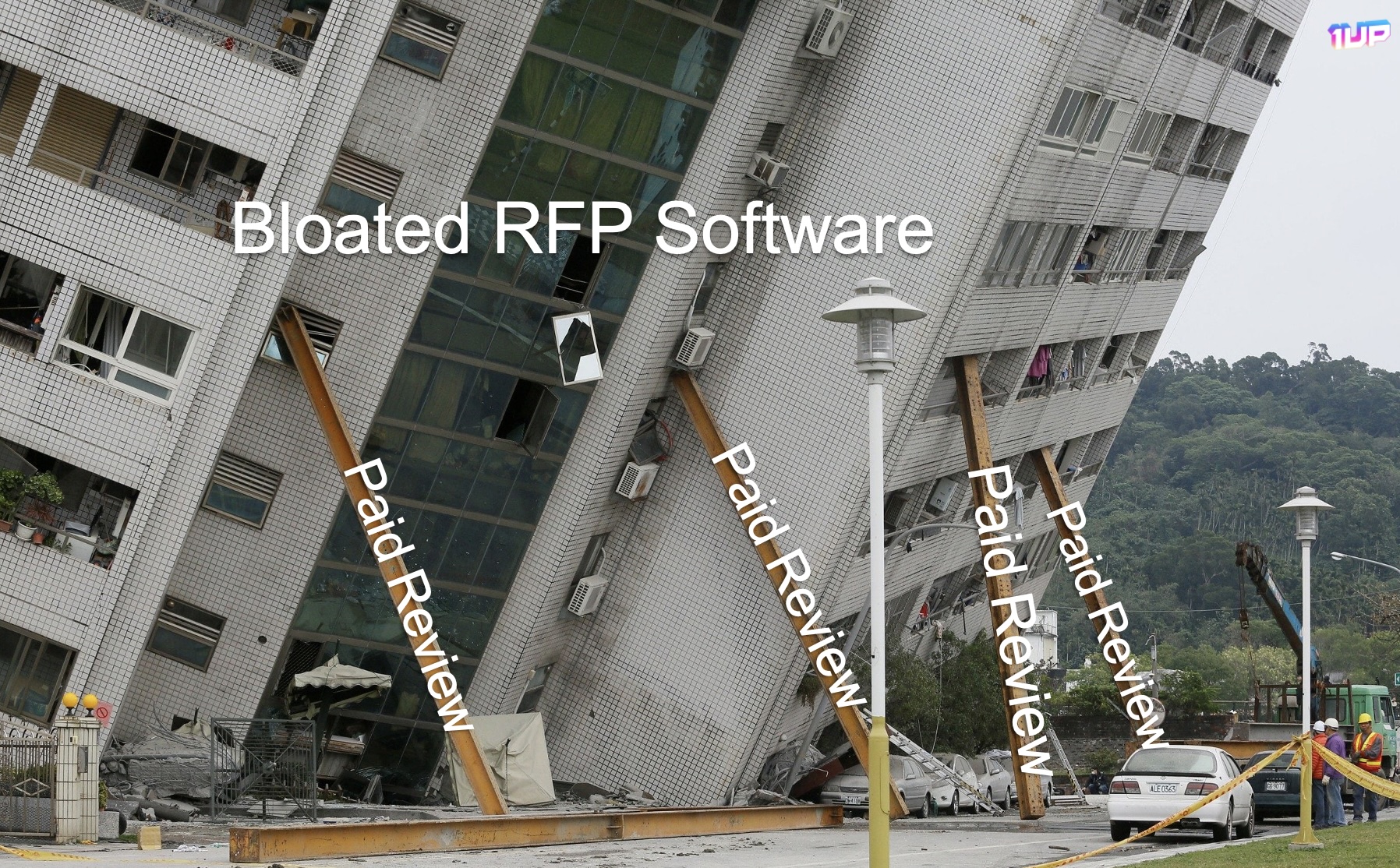
Questions To Ask Vendors ❓
If you want to cut through the sales speak and marketing noise, here’s a list of direct questions you should ask the vendors you’re reviewing.
- Are the answers provided a ‘cut and paste’ of previous responses, or are they tuned to new questions?
- Does your tool automatically identify questions, or do users need to manually map out rows, columns, and questions?
- Do users need to continue living in Excel or Word documents?
- How fast can the system generate 100 answers to a questionnaire?
- Does the tool connect to living document sources such as like Google Drive and Confluence?
- Can the tool use gated websites and support portals to generate answers?
- How does the tool support web-based questionnaires?
- Can the system handle unstructured free-form RFPs?
- When they say their tool has AI features, do they mean that new and unique answers are generated for questionnaires? Or does it mean it uses AI to ‘search’ for past answers?
- How easy is it to maintain a knowledge base? Do users need to maintain a list of hundreds of Q&A pairs?
- How long of a contract do users need to subscribe to? Is there a free trial period, and what are the limitations?
- Does the tool actually reduce the amount of time or people it currently takes to complete a questionnaire? If so, by how much?
- If the answer returned by the system needs tweaking or reworking, what tools does the system provide to help you accomplish this?
- Can you ask the system one-off questions to get information you need to help with this?
- Are support costs extra?
When It’s Time for Procurement 💳
Once you’ve selected your preferred tool, it’s time to pick a pricing plan and inform your finance team.
At 1up, our pricing plans vary based on questionnaire volume. All pricing tiers include unlimited single answer generation and free integrations such as Slack, Microsoft Teams, and Single Sign-On login.
At this stage, you may also be required to get approval from your IT/Security team. Depending on company policies, you might have to share a vendor risk questionnaire with your preferred vendor (how ironic).
Here are some considerations when procuring a tool like 1up:
- Your legal team might have compliance requirements for deploying Generative AI tools. At 1up, our ToS already covers most requirements, but consider the possibility of an additional Data Processing Agreement to ensure all parties are comfortable.
- Your IT team might ask that you complete a security review or to provide the vendor’s SOC2 report. This is a great opportunity to see if the vendor eats their own dog food. Ask them if they automated the questionnaire through their own product.
- On rare occasions, you might ask the vendor to complete an MNDA. Confidentiality is most likely covered by their Terms of Service, but feel free to include it if necessary. After all, you are dealing with sensitive data.
Finally, make sure you can get a free trial. Don’t just settle for a demo. You want to be able to test multiple questionnaire types, formats, and answer modes. This is how you can ensure that your team picks the right tool for the job.
Want to automate your RFPs and sales questionnaires?
Try 1up and you’ll never manually fill out a questionnaire again.
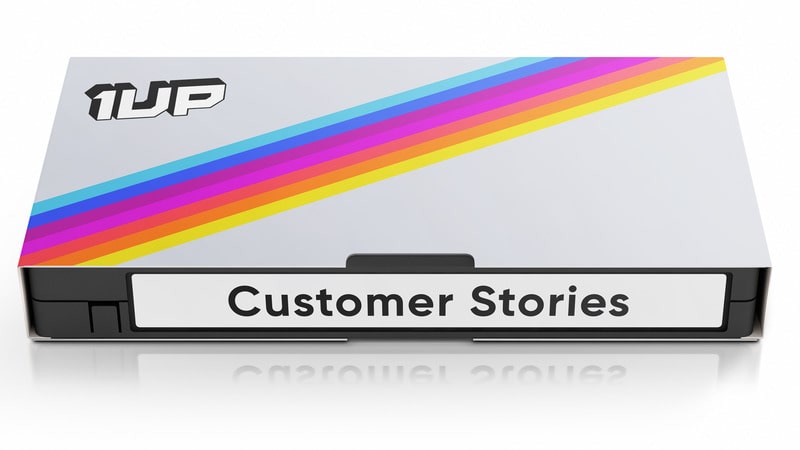

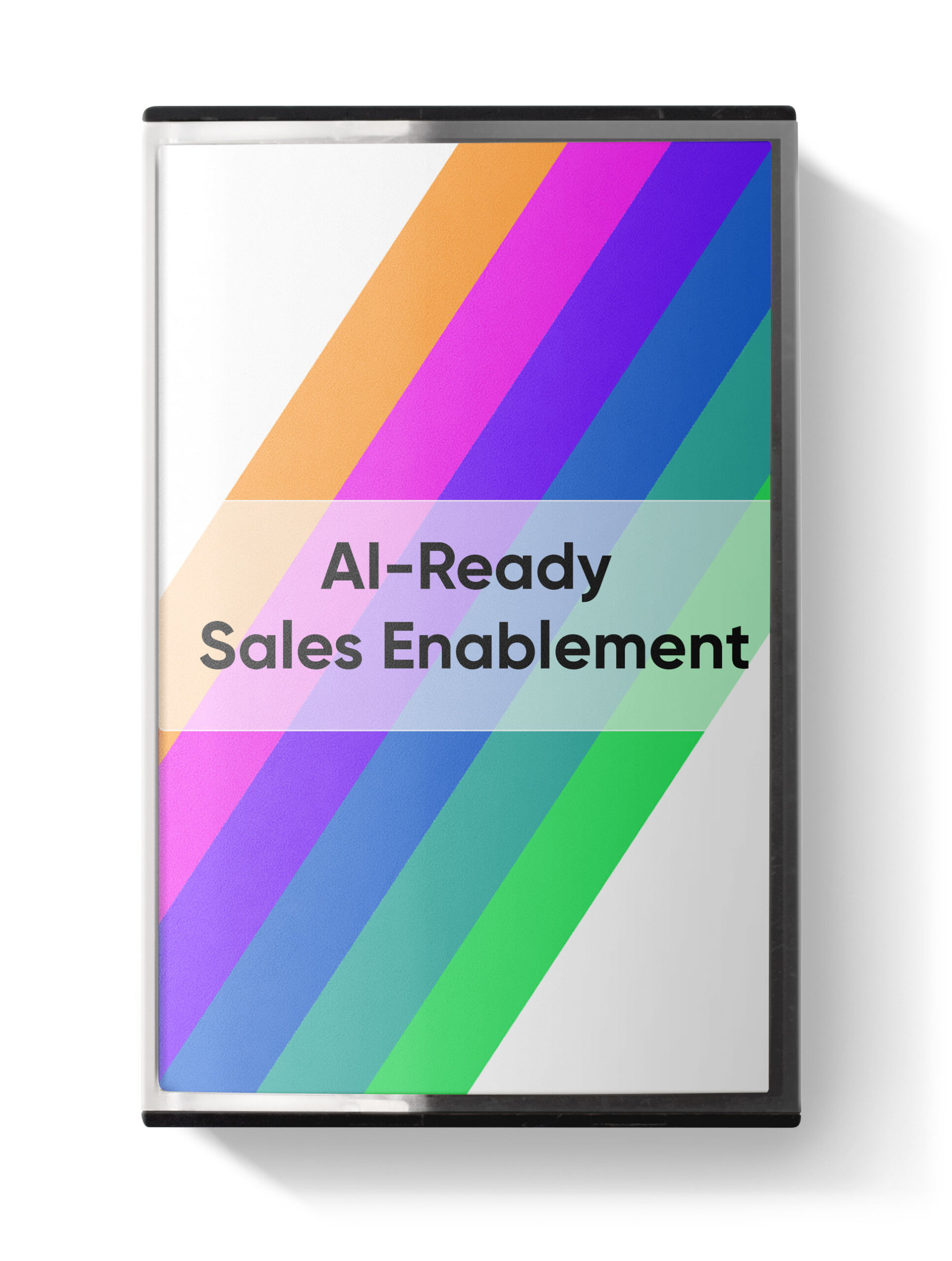
 Instagram
Instagram 


